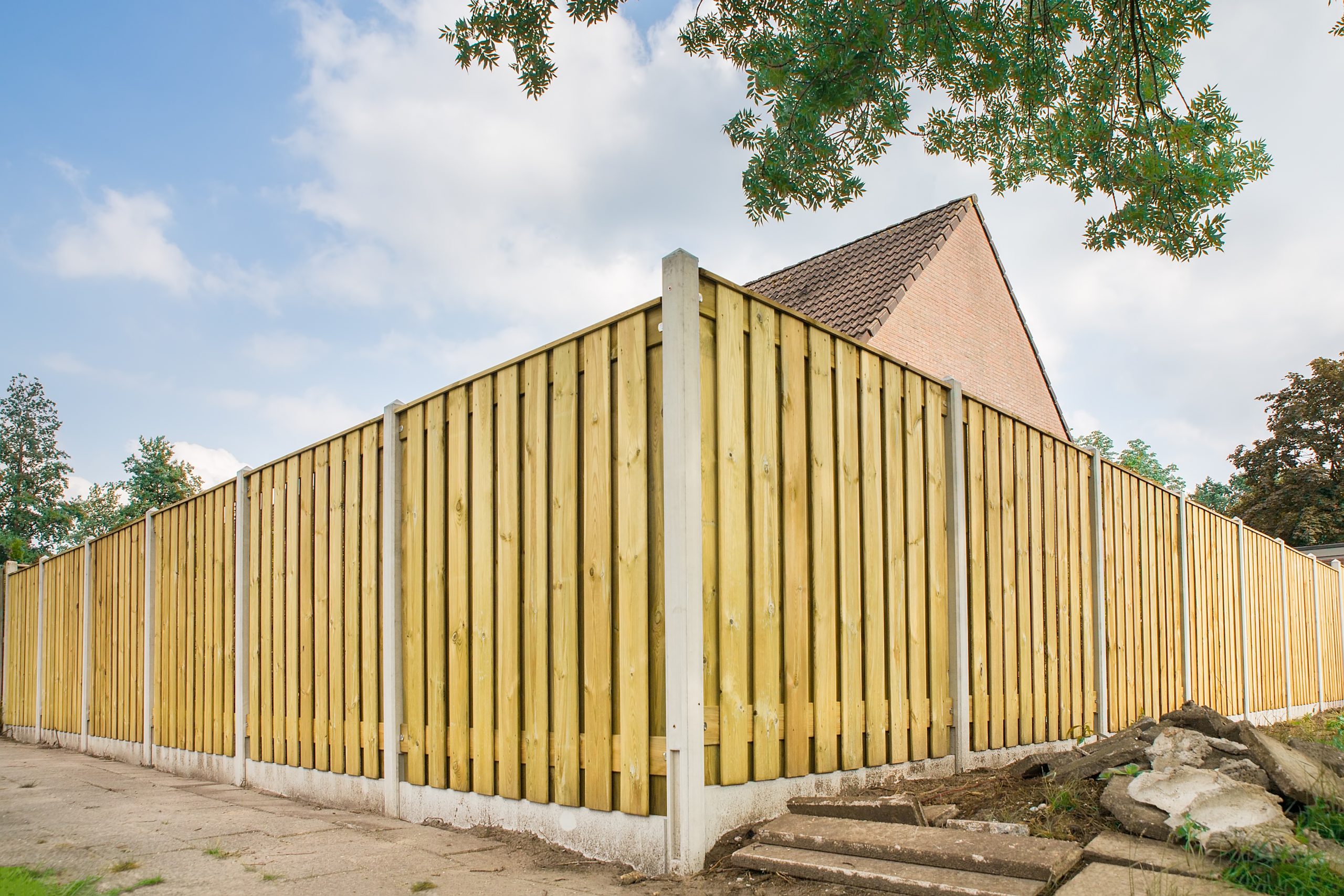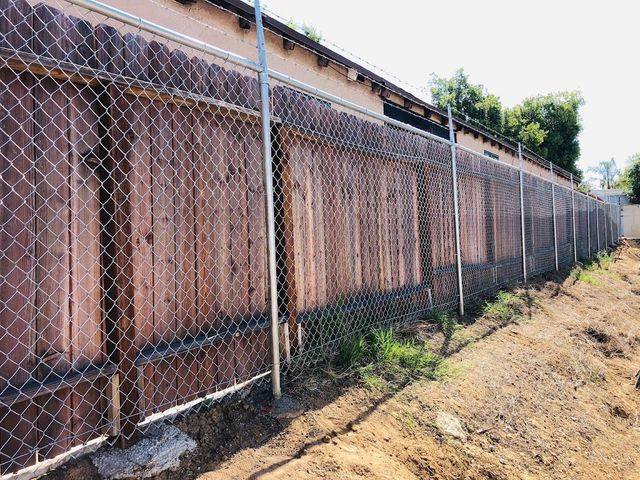Featured
As sustainability becomes a progressively essential element in home and industrial residential property style, the need for environmentally friendly items remains to climb. This includes materials for outside spaces, specifically for fencings. While typical secure fencing options like plastic, wood, and steel can have significant environmental drawbacks, there are several lasting and environment-friendly alternatives available. Selecting eco responsible fence materials helps in reducing your carbon footprint and sustains preservation efforts. Allow's check out a few of the very best eco-friendly secure fencing choices that advertise sustainability while also supplying toughness and style.
Advantages: Bamboo requires marginal water, chemicals, and plant foods to grow. It is eco-friendly, decreasing waste at the end of its life process. It is additionally resilient and resistant to rot, making sure longevity with correct treatment. Factors to consider: Bamboo might not be perfect for areas with harsh wintertimes or extreme cool, as it can come to be fragile and fracture in freezing temperature levels. 2. Recycled Products Fence. Fences made from recycled materials, such as post-consumer plastics, redeemed timber, or recycled metal, are becoming significantly preferred in eco-conscious layouts. These materials reduce waste, save resources, and decrease the need for the removal of resources, which is advantageous for the atmosphere. By repurposing existing materials, you add to lowering the demand for brand-new, energy-intensive production processes.
Advantages: Utilizing recycled products aids divert waste from land fills, minimizes environmental effect, and can lower your carbon footprint. It is additionally a cost-efficient option sometimes. Considerations: The visual of recycled product fencings can differ, and some may not accomplish the very same all-natural look as typical wood fencings. However, lots of producers currently provide styles that reproduce the look of timber or rock. 3. Compound Fence. Composite secure fencing is made from a combination of timber fibers and plastic, frequently sourced from recycled content. This sort of fence provides the appearance of timber with minimal upkeep, while also being eco-friendly. Composite materials are commonly lasting and resistant to the aspects, decreasing the requirement for regular substitute or therapy with chemicals.
![]()
Benefits: Compound fences are long lasting, low-maintenance, and can be made from recycled content, helping in reducing waste. They do not require unsafe chemicals for preservation, unlike treated wood. Factors to consider: While composite secure fencing is resilient, it often tends to be more pricey ahead of time contrasted to typical wood. Nevertheless, its long life and reduced upkeep may make it a more affordable option gradually. 4. Cedar and Redwood Fencing. Cedar and redwood are preferred choices for environmentally-conscious fence, as both materials are naturally resilient, resistant to decay, and need minimal chemical treatments. These woods can be sustainably collected from responsibly taken care of woodlands, guaranteeing their environmentally friendly condition. They additionally have an all-natural elegance that several house owners appreciate, with abundant shades and textures that enhance aesthetic charm.
Benefits: Cedar and redwood fences are durable, naturally pest-resistant, and have a reduced environmental impact when harvested sustainably. They also have a classic aesthetic and can mix seamlessly into natural landscapes. Considerations: While cedar and redwood are much more environment-friendly than other types of timber, they are still wood items and call for appropriate maintenance to prevent degeneration. The price may also be greater compared to other products. 5. Living Fencings (Hedges and Shrubs) For those seeking an extra eco-friendly and natural choice, living fencings, or hedgerows, are a superb option. Popular selections for living fencings consist of bamboo, boxwood, and privet.
Advantages: Living fencings enhance air top quality, add to biodiversity, and supply an all-natural appearance that blends seamlessly with the landscape. They likewise reduce sound pollution and help manage temperatures in your backyard. Considerations: Living fencings call for routine upkeep, such as trimming and watering, and may not be suitable for every single climate. They additionally need time to develop prior to they can offer complete personal privacy. 6. Stone and Brick Fencing (Redeemed) Stone and block are exceptionally sturdy materials, and utilizing recovered stone or brick can be an eco-friendly method to create a fence. By recycling these products from old buildings or frameworks, you reduce the demand for brand-new sources and reduce waste. Stone and block fences are strong, require little maintenance, and give a timeless seek to any kind of building.
![]()
Conveniences: Reclaimed rock and brick fences are incredibly durable, low-maintenance, and supply superb personal privacy and protection. They are likewise energy-efficient, as they assist control temperature by acting as natural insulators. Factors to consider: Setup of stone and block fencings can be much more pricey and labor-intensive than other products. In addition, these fencings might not appropriate for all buildings as a result of the weight and the need for correct installation. Verdict. Bamboo, recycled products, composite fence, and cedar or redwood all offer sustainable choices to conventional products. By choosing one of these sustainable fencing materials, you're making a favorable influence on the atmosphere while creating a lovely and useful outside area.
- Bamboo Fencing. Bamboo is one of the most environmentally friendly materials offered for fencing. As one of the fastest-growing plants in the globe, bamboo is exceptionally sustainable, able to expand back quickly after being harvested. Unlike hardwood trees, which can take decades to develop, bamboo gets to full development in just a few years, making it a perfect sustainable alternative. Bamboo fences are solid, normally resistant to insects, and provide a beautiful, all-natural aesthetic.
Advantages: Bamboo requires marginal water, chemicals, and plant foods to grow. It is eco-friendly, decreasing waste at the end of its life process. It is additionally resilient and resistant to rot, making sure longevity with correct treatment. Factors to consider: Bamboo might not be perfect for areas with harsh wintertimes or extreme cool, as it can come to be fragile and fracture in freezing temperature levels. 2. Recycled Products Fence. Fences made from recycled materials, such as post-consumer plastics, redeemed timber, or recycled metal, are becoming significantly preferred in eco-conscious layouts. These materials reduce waste, save resources, and decrease the need for the removal of resources, which is advantageous for the atmosphere. By repurposing existing materials, you add to lowering the demand for brand-new, energy-intensive production processes.
Advantages: Utilizing recycled products aids divert waste from land fills, minimizes environmental effect, and can lower your carbon footprint. It is additionally a cost-efficient option sometimes. Considerations: The visual of recycled product fencings can differ, and some may not accomplish the very same all-natural look as typical wood fencings. However, lots of producers currently provide styles that reproduce the look of timber or rock. 3. Compound Fence. Composite secure fencing is made from a combination of timber fibers and plastic, frequently sourced from recycled content. This sort of fence provides the appearance of timber with minimal upkeep, while also being eco-friendly. Composite materials are commonly lasting and resistant to the aspects, decreasing the requirement for regular substitute or therapy with chemicals.

Benefits: Compound fences are long lasting, low-maintenance, and can be made from recycled content, helping in reducing waste. They do not require unsafe chemicals for preservation, unlike treated wood. Factors to consider: While composite secure fencing is resilient, it often tends to be more pricey ahead of time contrasted to typical wood. Nevertheless, its long life and reduced upkeep may make it a more affordable option gradually. 4. Cedar and Redwood Fencing. Cedar and redwood are preferred choices for environmentally-conscious fence, as both materials are naturally resilient, resistant to decay, and need minimal chemical treatments. These woods can be sustainably collected from responsibly taken care of woodlands, guaranteeing their environmentally friendly condition. They additionally have an all-natural elegance that several house owners appreciate, with abundant shades and textures that enhance aesthetic charm.
Benefits: Cedar and redwood fences are durable, naturally pest-resistant, and have a reduced environmental impact when harvested sustainably. They also have a classic aesthetic and can mix seamlessly into natural landscapes. Considerations: While cedar and redwood are much more environment-friendly than other types of timber, they are still wood items and call for appropriate maintenance to prevent degeneration. The price may also be greater compared to other products. 5. Living Fencings (Hedges and Shrubs) For those seeking an extra eco-friendly and natural choice, living fencings, or hedgerows, are a superb option. Popular selections for living fencings consist of bamboo, boxwood, and privet.
Advantages: Living fencings enhance air top quality, add to biodiversity, and supply an all-natural appearance that blends seamlessly with the landscape. They likewise reduce sound pollution and help manage temperatures in your backyard. Considerations: Living fencings call for routine upkeep, such as trimming and watering, and may not be suitable for every single climate. They additionally need time to develop prior to they can offer complete personal privacy. 6. Stone and Brick Fencing (Redeemed) Stone and block are exceptionally sturdy materials, and utilizing recovered stone or brick can be an eco-friendly method to create a fence. By recycling these products from old buildings or frameworks, you reduce the demand for brand-new sources and reduce waste. Stone and block fences are strong, require little maintenance, and give a timeless seek to any kind of building.

Conveniences: Reclaimed rock and brick fences are incredibly durable, low-maintenance, and supply superb personal privacy and protection. They are likewise energy-efficient, as they assist control temperature by acting as natural insulators. Factors to consider: Setup of stone and block fencings can be much more pricey and labor-intensive than other products. In addition, these fencings might not appropriate for all buildings as a result of the weight and the need for correct installation. Verdict. Bamboo, recycled products, composite fence, and cedar or redwood all offer sustainable choices to conventional products. By choosing one of these sustainable fencing materials, you're making a favorable influence on the atmosphere while creating a lovely and useful outside area.
Latest Posts
A Desire Wedding Event Experience at FunCity Resort
Published Apr 21, 25
1 min read
Maintain Your Rug Looking Its Finest with Easy, Expert Treatment
Published Apr 20, 25
1 min read
Full Circle Strategic Marketing - Collaborate with Our Proven Strategies for Unstoppable Growth
Published Apr 20, 25
2 min read
More
Latest Posts
A Desire Wedding Event Experience at FunCity Resort
Published Apr 21, 25
1 min read
Maintain Your Rug Looking Its Finest with Easy, Expert Treatment
Published Apr 20, 25
1 min read
Full Circle Strategic Marketing - Collaborate with Our Proven Strategies for Unstoppable Growth
Published Apr 20, 25
2 min read